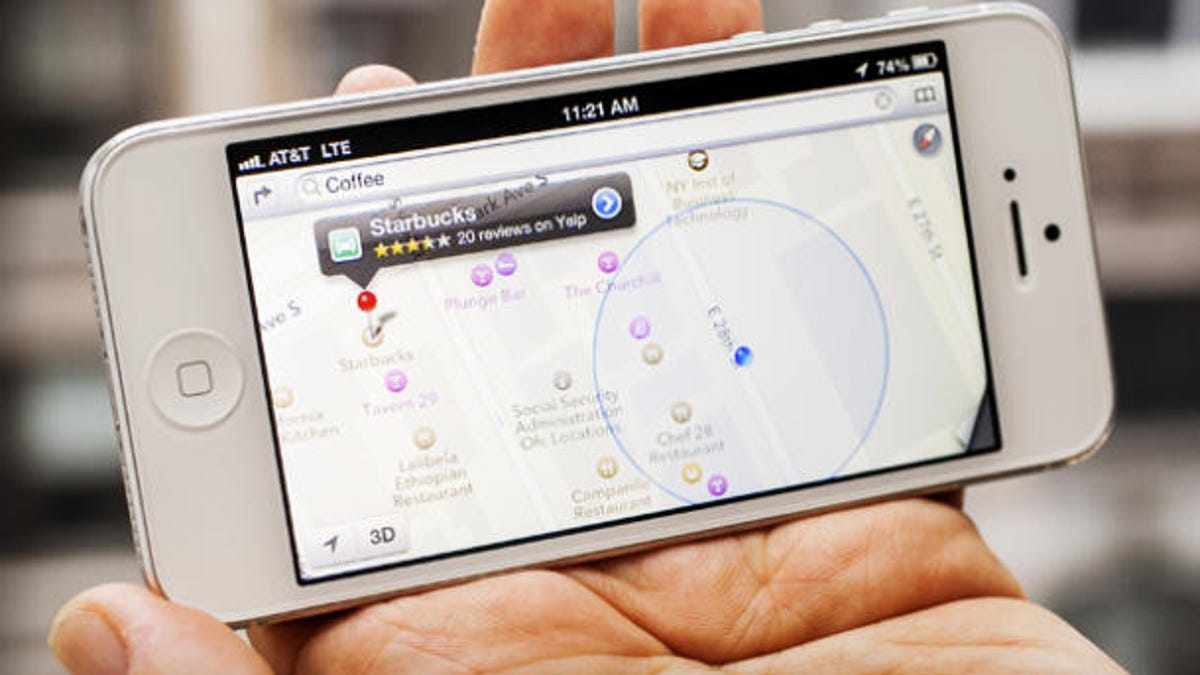Apple Maps uses less data than Google Maps, says study
The new Maps app consumes one-fifth as much data as does its Google rival, says analytics firm Onavo, a bonus for subscribers on a strict data plan.

Apple Maps has taken it on the chin for its faulty data, but a new study cites one advantage for the beleaguered app.
Apple Maps chews up less data -- just one-fifth as much -- than does Google Maps, according to Onavo. Running both apps through a series of scenarios, the analytics firm found that the average amount of data downloaded by Apple Maps was around 271 kilobytes. In contrast, Google Maps consumed around 1.3 megabytes on average.
In certain cases, such as zooming in to a specific spot, Apple Maps proved seven times more data efficient than Google Maps, according to Onavo.
Why all the data downloads? As Onavo explained it, each time you zero in on a new location, the app has to download the street map data that appears on the screen. If you move or zoom in or out, new data needs to be downloaded to refresh the view.
All that data consumption is not a problem on a Wi-Fi connection. But users often turn to a maps app when they're out and about on a 3G or 4G connection. The more data downloaded, the more it eats into your data plan.
Apple Maps holds the upper hand, says Onavo, because it uses vector graphics. Such an approach reduces the amount of data that needs to be downloaded each time a user zooms in or out of the map.
Of course, chewing up less data isn't a cause for celebration if the data itself can't be trusted.
Apple has famously issued a mea culpa for its buggy app, even suggesting that users try alternatives until Maps can get its act together.

